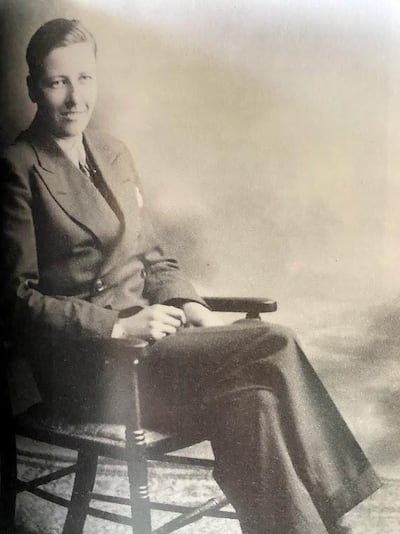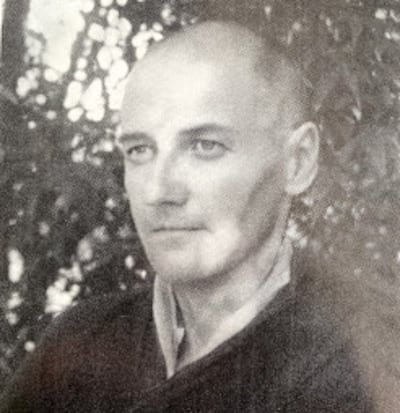In May 1962 the London-based literary agent John Johnson received news that Michael Dillon, one of his clients, had died unexpectedly in a hospital in India. Dillon had been brought to a hospital in Dalhousie, in the north of India, after collapsing on a mountain pass while travelling to Kashmir. Shortly after receiving news of this client's untimely passing, Johnson was surprised to receive a parcel Dillon had sent to London days before his death.
The parcel contained Dillon's memoir. Out of the Ordinary, as the manuscript was titled, remains a remarkable document. It records the life of an Anglo-Irish transgender man whose journey took him from an aristocratic upbringing, through education at Oxford and Trinity College Dublin and, finally, to India, where he was ordained a Buddhist monk. The act of writing it with the intent of publication was, as Dillon's first biographer, Liz Hodgkinson, noted, "a kind of victory" for Dillon. When Dillon posted the manuscript, he set in motion a chain of events that would ultimately lead to his life of "gender and spiritual transitions" being told in his own words.

Born in May 1915 in Kensington, in west London, Dillon was born into an Anglo-Irish family and was assigned female at birth. The Dillon family were heirs to an aristocratic title: the baronetcy of Lismullen, in Co Meath. In his memoir, Michael Dillon noted that in addition to this Anglo-Irish paternal lineage, he was partly Irish through a Cork-born grandmother on his mother’s side. Irish blood, Dillon noted, ran “thickly in our veins”.
Aware of his gender-nonconformity from a young age, Dillon crossed a threshold while walking with an acquaintance shortly before he left for Oxford, to study at St Anne’s College, which at the time was for women only. Dillon’s companion on the walk, the nephew of a local vicar, held a gate open for Dillon in a mannerly gesture. Dillon was immediately struck by a thought: He thinks I’m a woman. The moment underlined for Dillon the discordance between who he knew himself to be and how others perceived him. “People thought I was a woman,” he recalled, “but I wasn’t. I was just me.”
Study at Oxford was marked by Dillon's ongoing journey of spiritual reflection and self-understanding. Jacob Lau and Cameron Partridge, two scholars who guided Dillon's memoir to its eventual publication, in 2017, note that Dillon's Oxford years were "fraught with the tensions of building crises of gender and vocation". In 1945, not long after graduating from Oxford, Dillon began studying medicine at Trinity College Dublin.
During his medical studies, Dillon undertook a series of gender-affirming surgeries with the renowned plastic surgeon Sir Harold Gillies. He was the first known case of a trans man to undergo phalloplasty. In 1946, in the midst of his studies at TCD, Dillon published a book, Self: A Study in Ethics and Endocrinology. Pagan Kennedy observed that the work made Dillon "one of the first scholars in the world to work out a classification system for gender identity and sexual desire".

In 1958, after the story of his transition was reported in the press against his wishes, Dillon moved to India to continue his spiritual path; he was eventually ordained a novice monk in the Tibetan Buddhist tradition under the name Lobzang Jivaka. In India he published works on Buddhism, before embarking on what would be his final project: his memoir.
Undoubtedly a pioneering figure in trans history – and by extension in the largely untold history of Ireland’s LGBTQ+ diaspora – Dillon has nonetheless been critically appraised by his biographers, who point out the shortcomings of his advocacy, such as an imperialist worldview bolstered by his time as a ship’s surgeon in the British navy.
Only 47 years old when he died, Dillon left behind a multifaceted legacy, one that can perhaps be surmised in a line from his 1946 book, Self: “If we do not know ourselves, how shall we ever know anyone else?” In defiantly shaping his destiny, Dillon ensured that future researchers could get to know him in his own voice.
This Extraordinary Emigrants article was written by Dr Maurice J Casey, DFAT historian-in-residence at EPIC The Irish Emigration Museum, in Dublin's Docklands, an interactive museum that tells the story of how the Irish shaped and influenced the world

















